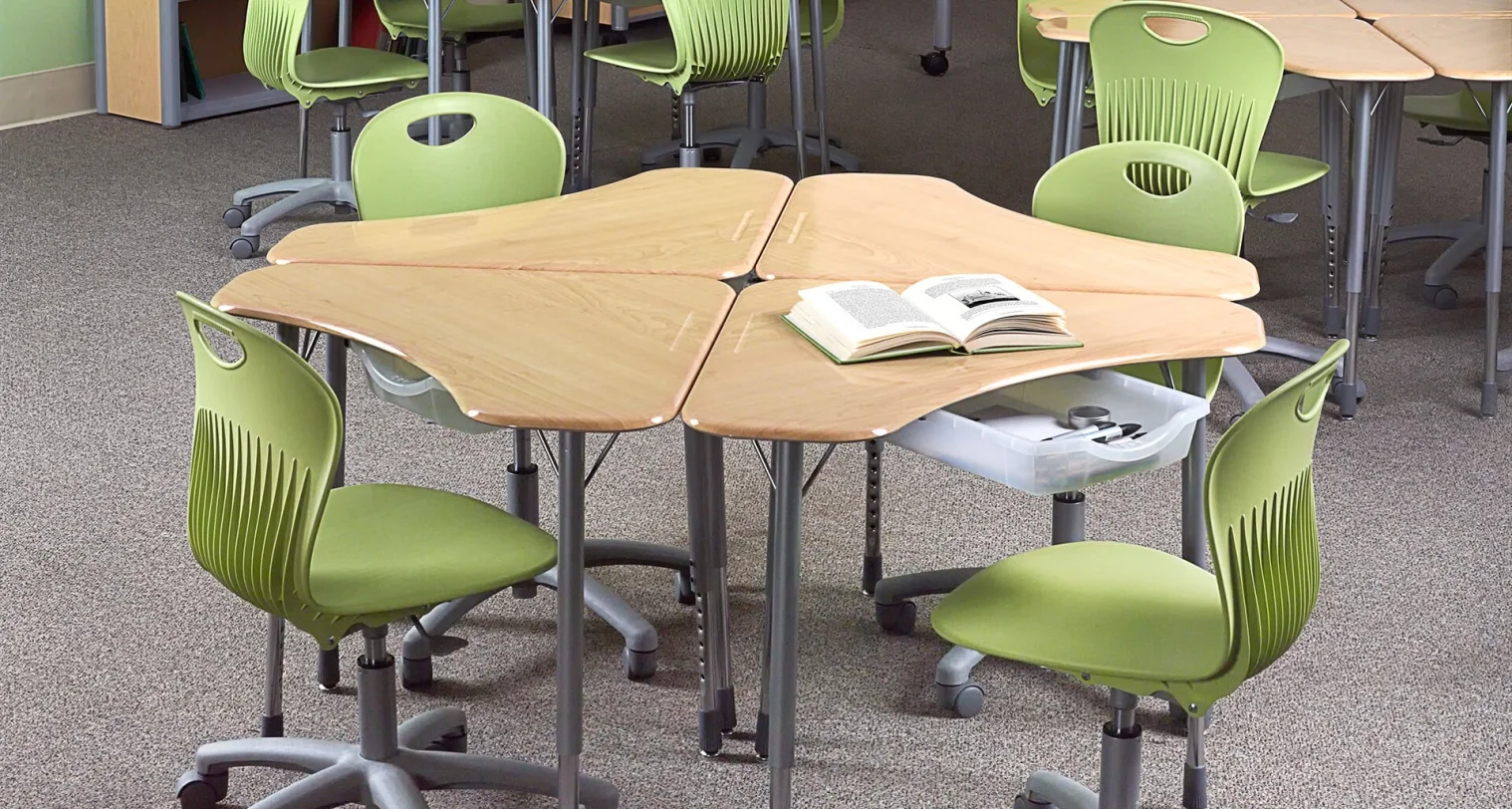Virco Mfg. Corporation (VIRC) today announced results for its second quarter and first six months ended July 31, 2017.
Strong order rates in spring and early summer translated into profitable revenue growth for the second quarter and first six months. Trends have moderated somewhat since then, but order rates and shipments still remain positive on a year-over-year basis, suggesting continued improvement for the balance of FYE 2018.
For the second quarter inclusive of the months of May, June, and July revenue increased 18.4% to $72,636,000 this year from $61,354,000 last year. Operating income for the quarter was up 11.9% to $8,406,000 from $7,512,000. Unrecovered material cost increases accounted for the relatively weaker growth in operating income vs. revenue.
For the first six months, revenue increased 16.7% to $95,871,000 this year from $82,181,000 last year. For the same period, operating income was up 10.2%, to $5,141,000 from $4,667,000. Management reminds readers who may be new to Virco that the Company typically loses money in the low-volume months of the first and fourth quarters, which accounts for the apparent disparity between the high-volume second quarter results and the blended results for the first six months.
Net income for the quarter and the first six months is not comparable because of a reversal of a deferred tax allowance in last year’s third quarter. This one-time, non-cash, non-operating adjustment had the effect of rendering this year’s net income at a normalized tax rate, whereas last year’s results were reported at a lower tax rate. Interested readers will find a complete discussion of this treatment in the Company’s Form 10K for the fiscal year ended January 31, 2017. EBITDA for the first six months of this year was up 7.2% to $7,742,000 from $7,222,000 last year.
The Company attributes these improved results primarily to renewed stability in public school funding, although Management believes modest gains in market share may also have contributed. Looking forward, the Company’s preferred indicator of overall business activity--actual year-to-date shipments plus the unshipped backlog--was 13.7% higher than last year on the same day in September. This figure reflects the moderation in order rates as summer came to an end. As always, Management cautions against using this figure as ‘guidance’ and presents it only as one additional piece of information about the Company’s order rates and remaining unshipped backlog.
The market for school furniture and equipment is highly fragmented. Inconsistencies in reporting categories make accurate benchmarking difficult. In providing market share estimates, Management relies heavily on Virco’s 67-year history of direct sales and service to America’s public school districts, of which there are approximately 13,500. The Company has done business with many of these districts at one time or another across that 67-year timeframe.
On average, across all regions of the United States, public school districts receive about 45% of their funding from local sources (taxes and bonds); 45% from their respective states (also taxes and bonds); and 10% from the Federal Government. Because these funding sources are mostly ‘downstream’ from local economic and social trends, they provide a uniquely granular proxy for many things, including direct purchases of school furniture and equipment as well as related trends in demography, business activity, employment, and state/local commitment to the broader idea of ‘Public Education.’
After a long and fairly steady trend of 2-4% annual growth during the Baby Boom, public school enrollment (and funding) began to stall in the late 1990s. Funding contracted significantly during the Great Recession-although enrollment did not-putting intense operating pressure on public schools. According to data collected by the National Center for Education Statistics and reported by National Public Radio, as recently as 2014 there were still 36 states spending less per student than in 2008, when the Great Recession began. This prolonged downturn has been a real challenge for America’s public schools. It has also made benchmarking more difficult.
Despite these analytical challenges, the Company interprets this year’s favorable results as a reflection of improved economic stability and employment across many regions of the country, resulting in better tax receipts and more support for state and local school bonds. In addition, Management believes the Company’s steady investment in flexible, low-cost domestic manufacturing is beginning to generate market share gains as the economic logic of outsourcing begins to shift.
In particular, recent extensions of the typical public school instructional calendar have shortened the summer delivery season to about seven weeks, making proximity and responsiveness even more essential for on-time furniture deliveries. The Company’s two vertically integrated fabrication and distribution facilities totaling over 2 million square feet were ideally located to respond to this year’s increase in demand.
Virco Chairman and CEO Robert Virtue was pleased with this summer’s performance: “We’re best when we’re busy, and this was a busy summer. Order rates were good all the way through July. Because our experienced staff has been here before, we were able to accelerate smoothly to higher operating levels. Morale is great and we’re looking forward to a solid fall season and an early start to preparations for another big summer next year.”
Virco President Doug Virtue concurred: “After many years of playing defense, it was fun to play offense. By design, we’ve turned the personal trust between our manufacturing and service teams into a strategic differentiator. There’s a very personal, very direct connection between our factory floors and America’s public school campuses. Many of our employees count more than thirty years of service. They have a sense of personal responsibility for each and every delivery, including the ongoing service that continues afterwards.”


